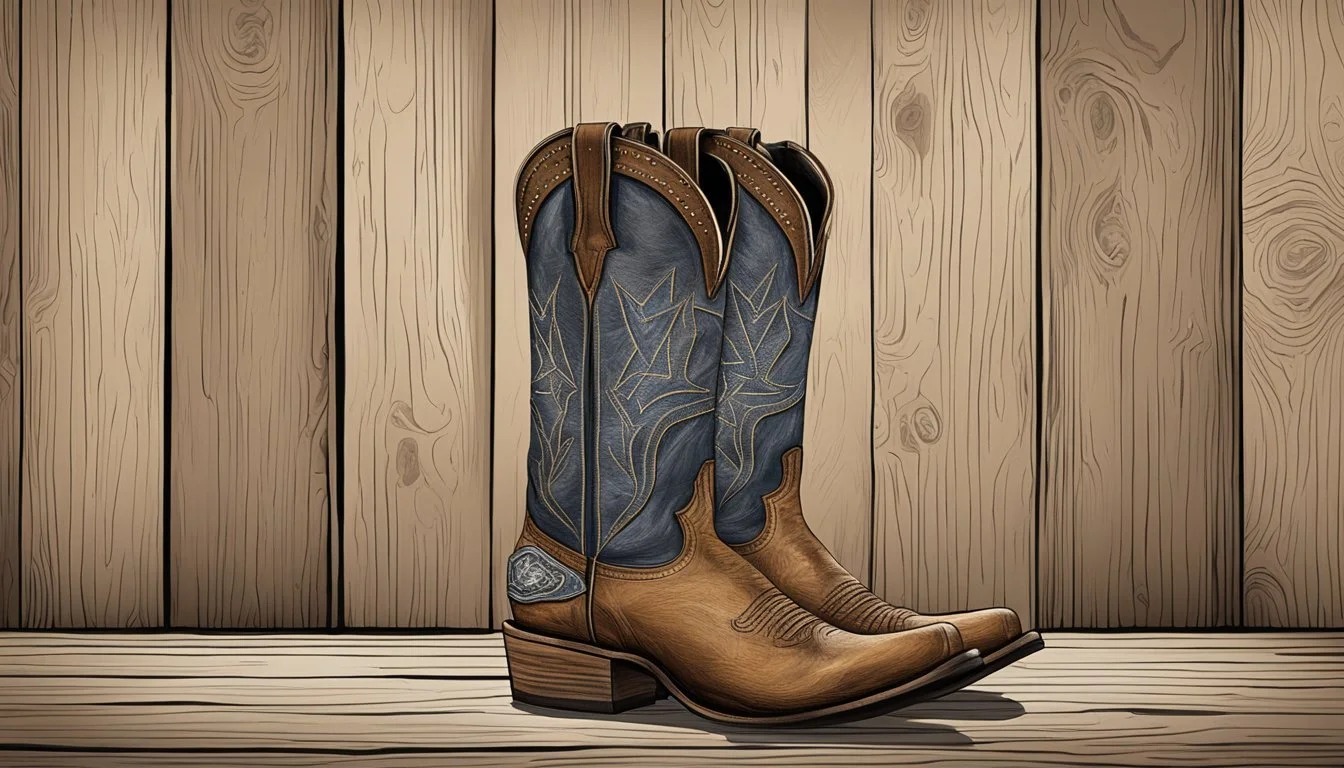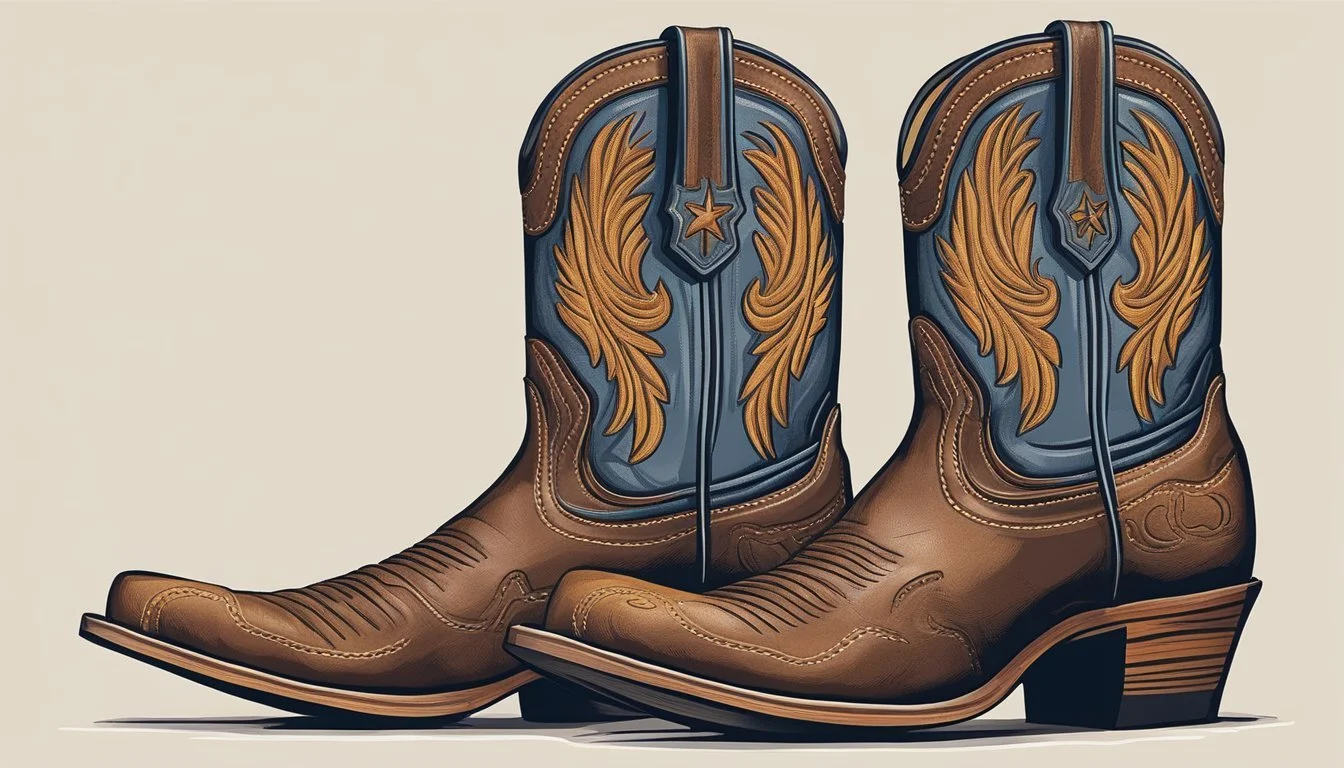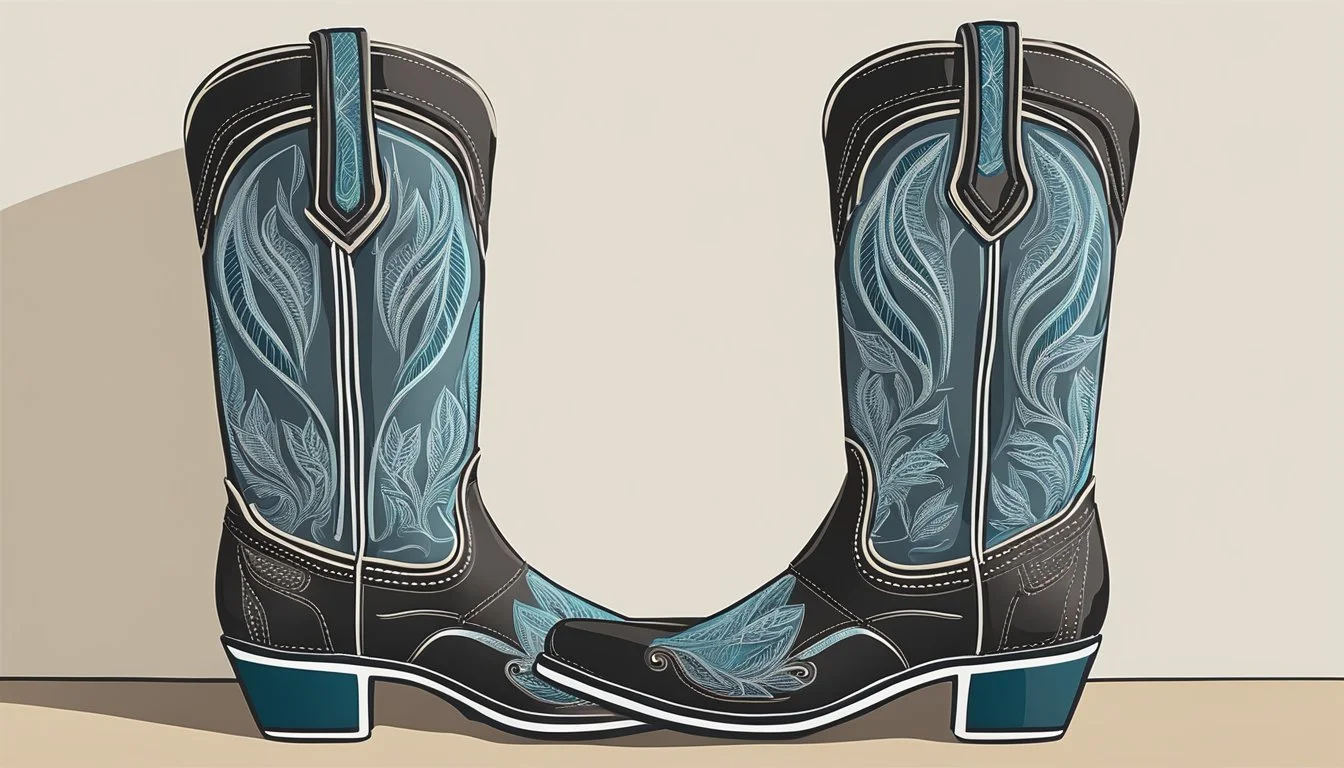The Story Behind the Iconic Texas Cowboy Boot Design
Origins and Evolution
The iconic Texas cowboy boot boasts a rich history that is closely intertwined with the cultural identity of the Lone Star State. Developed out of necessity, these boots were originally designed for cowboys who required durable and functional footwear to handle the rigors of ranch work and long cattle drives. It wasn't long before the practical design evolved, surpassing mere utility to become a symbol of Texan craftsmanship and pride.
Over time, the design of the cowboy boot has carried the stories of the individuals who wore them—each pair a testament to the distinct culture of the American West. The classic silhouette with its high shaft, angled heel, and pointed toe was engineered to protect the wearer and to easily slide into stirrups, while the absence of laces prevented the boot from catching on brush or being pulled off by livestock or equipment. As cattle drives from Texas to northern markets flourished after the Civil War, so too did the popularity and evolution of the boot, branching into a variety of styles and adornments.
Today, Texas remains at the heart of cowboy boot production, finding itself as a hub for both traditional and contemporary design. From simple, hard-wearing work boots to glossy, intricately decorated fashion statements, boots have become canvasses for expressing personal style and regional heritage. The craftsmanship involved is often passed down through generations, with master bootmakers dedicated to preserving the traditions and techniques that give Texas cowboy boots their renowned character and quality.
Origins of the Texas Cowboy Boot
The Texas cowboy boot, an enduring symbol of the American West, is rooted in practicality and shaped by cultural fusion. Its design reflects a mixture of historical necessity and diverse influences, evolving into an American icon over time.
Historical Beginnings
The origins of the cowboy boot trace back to the 1870s, during a period when the American cowboy became a central figure in driving cattle across the rugged terrain of the Old West. The cowboy boot was born out of necessity for sturdy footwear that could withstand long hours in the saddle and protect against the elements and rough brush.
Influence of the Vaqueros
The craftsmanship and style of cowboy boots were significantly influenced by the vaqueros of northern Mexico. These skilled horsemen and cattle herders brought their own riding boot design when they came to work in the burgeoning American ranching industry. Their boots featured a high top to protect legs, a pointed toe for easier insertion into the stirrup, and a Cuban heel for stability in the saddle.
Innovation on the Frontier
Advancements in boot-making were propelled by the rugged demands of frontier life. The first Duke of Wellington popularized a boot with a low-cut heel and a form-fitted design, elements that cowboys adapted for their needs. Over time, American bootmakers innovated to create boots that were both functional and stylish, eventually incorporating unique stitching, elaborate designs, and a variety of materials into their construction. These boots became not just a tool for the working cowboy but a statement of personal style and regional pride.
Design Elements of the Cowboy Boot
The iconic Texas cowboy boot combines function with intricate designs, from the distinctive heel shape for riding stability to elaborate stitching patterns that reflect individual style. Each element contributes not only to the boot's aesthetic but also to its utility as a piece of classic Western gear.
The Role of the Heel
The cowboy boot heel, typically angled, serves a practical purpose: it helps secure the foot in the stirrups during horse riding. The stacked leather heel varies in height but typically ranges from one to two inches. These heels are not only functional but can be stylistically distinctive, with some custom bootmakers offering a variety of shapes, from the classic "walking" heel to the taller "riding" heel.
Stitch Patterns and Toe Design
Stitch patterns on cowboy boots are more than just decorative; they serve to reinforce the structure of the boot. Intricate designs featuring floral motifs, geometric patterns, or iconic Western symbols, such as stars or eagles, are commonly stitched into the leather. The toe design is equally varied, with the pointed toe—known as a "snip toe"—being highly sought after for its traditional look and ability to slide into stirrups easily.
Shaft Considerations and The Stirrup
The shaft of a cowboy boot, generally rising to mid-calf, offers both protection and a canvas for individual expression. Its height ensures safety in dense brush or during livestock handling. Custom bootmakers often integrate stirrup-friendly features—like reinforced leather—to withstand the wear of riding. The boot's shaft affects functionality while providing an extensive area for showcasing personalized stitch patterns or leather tooling that reflects the wearer's personality.
Materials and Craftsmanship
The iconic Texas cowboy boot is a testament to diverse materials and the exceptional skills of bootmakers. High-quality leather and sometimes exotic materials are hand-selected, and each pair of boots is crafted with meticulous attention to detail.
Leather Varieties and Exotic Materials
Leather, the primary material in cowboy boots, comes in various types with cowhide being the most common due to its durability and ease of access. However, for those desiring a more unique aesthetic, bootmakers also work with exotic leathers. Here are some notable materials:
Cowhide: Standard, sturdy, and versatile
Eel: Remarkably supple and distinctively textured
Alligator: Luxurious and durable with a recognizable pattern
Snake: Offers a unique and striking appearance
Ostrich (What wine goes well with ostrich?): Known for its softness and durability, punctuated by quill bumps
Lizard: Features an intricate, natural scale pattern
Buffalo: Provides a robust texture and exceptional toughness
Each material has unique properties that inform the boot’s function, fit, and flair. While cowhide is prized for its endurance, exotic materials such as alligator or snake skins are sought after for their exclusive patterns and textures, making each pair a unique masterpiece.
Handmade Quality and Bootmakers
Crafting a pair of cowboy boots is an art that combines traditional techniques with the personal touch of the bootmaker. The process of making custom boots includes cutting, stitching, and finishing each piece by hand, ensuring no two pairs are identical. The handmade aspect signifies a commitment to quality where every stitch and cut is executed with precision.
Custom boots are a specialty, with clients often having a say in every aspect of the design, from the choice of leather to the style of the toe. Talented bootmakers blend skill with creativity to transform these materials into wearable art. The importance of the bootmaker's role cannot be overstressed, as they are the ones who shape the boot’s identity, marrying functionality with aesthetics.
While machines can produce cowboy boots in bulk, handcrafted boots carry the mark of authenticity and individuality, valued by those who appreciate the custom fit and unique character that only a handcrafted boot can offer. The dedication to craftsmanship ensures that every pair is built to last, offering both style and substance.
Functionality and Adaptations
The iconic Texas cowboy boot design has undergone numerous transitions to enhance its functionality, from assisting cowboys in riding to adapting for comfortable walking. These adaptations have contributed to the footwear's broader appeal without sacrificing its original rugged utility.
From Riding to Walking: The Evolution of Utility
Originally designed for horseback riding, cowboy boots have distinct features like a higher heel which is crucial in preventing the foot from sliding through the stirrups. Historically, these riding boots were considered essential for safety and function in equestrian activities. High boots with tall shafts protected the wearer's calf from the saddle and brush, and sturdy leather guarded their feet from the hazards of ranch work.
Over time, the design of cowboy boots diversified to include work boots and walking boots. Manufacturers implemented modifications such as lower, more comfortable heels suitable for walking, while maintaining durability.
Footwear for the Range and the Rodeo
The utility of cowboy boots extends to specific environments like the range and the rodeo.
Roper boots emerged as a response to the needs of rodeo performers. They have a shorter shaft and a lower, squared heel which allows for easier slipping in and out of stirrups, and rapid dismounts. This design is functional for both walking and riding.
Traditional cowboy boots often feature a higher heel, typically angled, which is indispensable in rodeo scenarios where quick starts and stops are common. This heel design serves to stabilize the foot in these high-action environments.
Each adaptation ensures that cowboy boots remain an optimal choice of footwear for various terrains and activities, from herding cattle on the range to competing in the rodeo arena.
Fashion and Cultural Significance
The Texas cowboy boot has transitioned from a utilitarian item to a potent symbol in fashion and cultural identity. They are not only functional but also serve as a fashion statement and emblem of Texan and American heritage.
Cowboy Boots as a Fashion Statement
Cowboy boots have made their mark on the fashion industry as an iconic statement piece. From their humble beginnings as practical workwear, they have been adopted by designers and worn by trendsetters worldwide. Material choice and design intricacy have evolved, allowing boots to move from the ranch to the runway. The boots' versatility is seen through various materials like exotic leathers and intricate designs ranging from subtle stitching to elaborate patterns.
Materials Commonly Used:
Traditional leather
Exotic skins such as ostrich, alligator, or snake
Design Elements:
Stitched patterns
Inlays
Embroidery
Celebrities and musicians have often amplified the boot's status, incorporating them into their on-stage personas, which in turn popularizes the style among fans and fashion enthusiasts.
Symbols of American and Texan Identity
Cowboy boots stand as potent symbols of both American and Texan identity, embodying values such as independence, resilience, and a connection to tradition. The boots' storied past is deeply entwined with the history of the cowboys, the original cattle herders whose skills were integral to settling the American West. The cultural significance of cowboy boots is evident in ceremonies and formal occasions across Texas, signifying an unwavering association with cowboy culture and societal values.
Values Associated With Cowboy Boots:
Independence
Resilience
Heritage
Cultural Significance:
Worn at formal events
Iconic in Texan ceremonies
They serve as daily wear for many, emphasizing their connection to tradition and a lifestyle that appreciates both function and form. As such, cowboy boots have ingrained themselves in the fabric of American life, from the dusty trails to urban streets.
Innovations in Style and Comfort
The evolution of Texas cowboy boots involves significant innovations that addressed both style preferences and the need for comfort. These changes include the introduction of Roper boots with their distinctive lower heels and the modern adaptations to classic boot designs to fit contemporary tastes.
Roper Boots and the Lowered Heel
The traditional cowboy boot is known for its higher heels, vital for stability in the saddle. However, the innovation of Roper boots marked a departure from this norm, focusing on a design geared toward comfort and practicality. Roper boots feature a lowered heel that makes it easier to walk and stand for prolonged periods, which aligns with the needs of modern wearers who may spend more time on foot than on horseback. These boots typically have a rounded or squared toe, a shorter shaft, and a looser fit around the ankle.
Heel Height: Approximately 1 inch (lower than traditional western boots)
Shaft: Shorter, often around 10 inches
Instep: Higher, contributing to eased foot entry and enhanced comfort
In addition to comfort, Roper boots have gained popularity for their versatility in various settings, from the ranch to casual outings.
Modern Twists on Classic Designs
Modern designers have taken the iconic look of classic Texas cowboy boots and infused it with contemporary flair. While maintaining the essence of tradition, these updated designs often exhibit bolder colors, exotic materials, and intricate detailing. Technological advancements also play a role, improving the comfort and durability of the boots.
Materials: Expanded range, including ostrich, alligator, and other exotics
Design Features: Incorporation of advanced cushioning and support systems
These boots, while staying true to the original western style, have adapted to meet the expectations of a fashion-forward and comfort-seeking clientele. Whether for daily wear or special occasions, cowboy boots now offer an array of options that are both stylish and comfortable.
Iconic Brands and Influences
The Texas cowboy boot design is a product of both tradition and craftsmanship, with a number of iconic brands shaping its evolution. These bootmakers have solidified the cowboy boot as not just footwear, but a symbol of cultural identity.
Texan Bootmakers and Their Legacy
Several Texan bootmakers have left an indelible mark on the iconic cowboy boot design. Lucchese stands out as a heralded brand, establishing itself in San Antonio in 1883 and later moving its operations to El Paso. They are known for quality craftsmanship and a range of styles that have influenced Western fashion.
Further cementing the Texan legacy, Justin Boots, founded in 1879, began its journey in Spanish Fort before eventually moving to Fort Worth, Texas. They played a key role in making the cowboy boot an integral part of Western culture. Another notable brand, Nocona Boot Company, which began in 1925 in Nocona, Texas, merged with Justin Boots in 1981 but has maintained a reputation for long-lasting, comfortable boots designed for various western lifestyles.
Additionally, Rios of Mercedes, dating back over 160 years, is renowned for their handmade boots crafted in the Rio Grande Valley. These bootmakers personify the enduring spirit of Texas through every pair of boots they create.
Western Boot Brands Beyond Texas
While Texas remains the heartland of cowboy boots, other states like Kansas and Oklahoma have added their own touch to this iconic footwear. Brands such as Miron Crosby, based in Highland Park, Texas, bring a contemporary twist to the traditional design while still paying homage to the boot's rugged Western roots. They showcase that even in modern settings, the essence of the cowboy boot remains unchanged.
Cowboy boots from West Texas reflect the region's unique landscape and cowboy culture, offering designs that are both functional for ranch work and elegant for social events. As these boots traverse state lines, they carry with them the stories and influences of the skilled artisans who crafted them, solidifying the cowboy boot's place not just in Texas but in the broader narrative of the American West.
Customization and Personal Expression
In the realm of Texas cowboy boots, customization signifies a wearer's identity, and personal expression is communicated through the intricate and varied decorative elements. Each pair can be tailored to reflect individual taste and style, making each boot a one-of-a-kind creation.
The Art of Customizing Cowboy Boots
Customizing cowboy boots is an esteemed practice that blends functionality with self-expression. Artisans cater to personal preferences by modifying everything from boot shape, heel type, to the overall silhouette. The process often begins with a detailed measurement to ensure a perfect fit, which is of paramount importance, followed by selecting materials that can range from classic leathers to exotic skins. Customization extends to the boot's visual aesthetics, with options for color, stitch patterns, and thematic motifs that can symbolize the wearer's personal history or interests.
Decorative Techniques: Inlays, Tooling, and Stitching
Decorative techniques are core to the cowboy boot design, offering both beauty and narrative. Inlays and overlays involve cutting and inserting different colors and textures of leather to create patterns or scenes, often depicting elements of Western iconography. Tooling refers to the hand-carved patterns on leather, an intricate process demonstrating high craftsmanship skills. Meanwhile, decorative stitching is not just for embellishment; it also reinforces boot structure. Stitch patterns may vary from the traditional to the complex and personalized, often engaging motifs that are meaningful to the boot owner. The expert use of these techniques results in cowboy boots being much more than footwear—they become wearable art, rich with individual significance.
Cowboy Boots in Modern Wardrobes
Cowboy boots have transitioned from rugged workwear to a timeless symbol in contemporary fashion. They embody a unique blend of utility and style that continues to evolve within modern wardrobes.
Integration Into Contemporary Fashion
The journey of cowboy boots into today's fashion sphere demonstrates their versatility and lasting appeal. In current times, these boots are not just a nod to cultural heritage; they have become a distinctive fashion statement in urban settings. Designer brands frequently infuse cowboy boots with modern twists, incorporating unexpected materials and textures to cater to a fashion-forward audience. Their appearance on catwalks and city streets alike illustrates their seamless integration into various style narratives, ranging from casual ensembles to more polished, high-fashion looks.
Tips for Purchasing and Wearing Cowboy Boots
When adding cowboy boots to a wardrobe, several tips can ensure they are a complementary and comfortable choice:
Fit and Comfort: Cowboy boots should feel snug on the foot, but not tight. Leather stretches and molds to the foot over time, so the initial fit is crucial.
Material: Classic cowhide leather offers durability, but exotic options like alligator or ostrich provide a unique flair. Consider the boot's purpose—be it for style or practicality—when selecting materials.
Style and Design: Choose a style that resonates with personal taste, whether it's a classic, unadorned boot or one embellished with intricate stitching.
Wardrobe Integration: Pair cowboy boots with slim-fitting jeans to showcase the boots, or with flowy dresses for a bohemian look. They should enhance an outfit without overpowering it.
By following these guidelines, one can ensure that cowboy boots will be a rewarding addition to their wardrobe, delivering both in terms of comfort and fashion statement.









